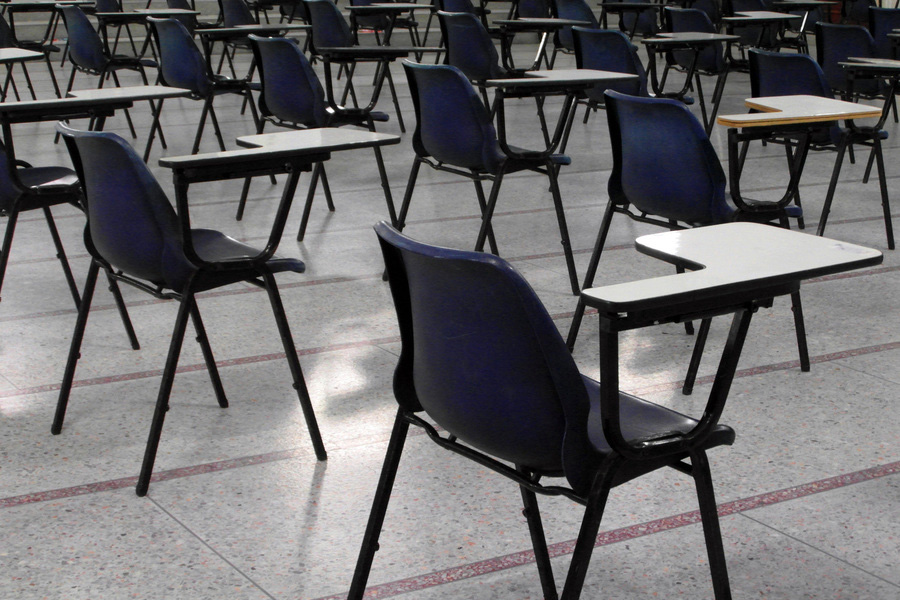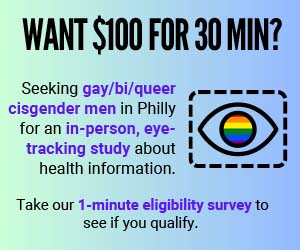Those of us with kids in school know that this time of year means the approach of an event that can cause distress even in the hardiest of us: Back-to-School Night.
This annual observance is on the surface a meet-and-greet with our children’s teacher(s), where they tell us all about the amazing things our children will be learning and doing this year, and we try to avoid signing up to bake cupcakes for school events. Usually, I come away a little jealous of all the great things my son will get to experience (though occasionally I’ve sat through a dreary, droning recitation of the syllabus).
For LGBTQ parents, however, Back-to-School Night can bring with it a host of additional questions: What if the teacher is homophobic or transphobic? What if the other parents are? Will I stand out because of my gender expression? Will there be other LGBTQ families there, or LGBTQ students in the class? Will there be LGBTQ-inclusive books and lessons?
Some of us may have already spoken with our children’s teachers to introduce ourselves and answer any questions they may have about LGBTQ families and individuals. This can be helpful, especially the first year in a school. Sometimes, however, our schedules prevent this; other times, we may choose to give our children, especially tweens and teens, the chance to control how and when to come out about their families. There is no one right answer for every family every year. The first year in a school may require a different approach than the third. We may even mix methods the same year when dealing with homeroom teachers as well as music, art, physical education and other specialists.
All of that means, however, that Back-to-School Night may still be a first encounter with some or all teachers, specialists and other parents.
Breathe. I can’t promise that things will always go swimmingly, but here are a few things to remember if you start to worry.
The first year in a new school or community may be the hardest. After your kids have been there a while, however, you’ll likely know at least some of the other families and have a general sense of the vibe of the school. Even if it isn’t particularly welcoming, at least you’ll know what you’re getting into. It might not be easy, but there will be less fear of the unknown.
When it’s been my family’s first year at a school (or even when it’s not), I try to focus on my commonalities with other parents. They probably have the same questions as I do about the class structure, curriculum and practicalities of the school year. I try to engage them and the teacher in conversation about these topics, or at the very least, share an anecdote about back-to-school shopping. Building bridges isn’t always easy, but I try.
I also remind myself that non-LGBTQ families outside the one mom-one dad paradigm may have similar concerns about fitting in and representation. And both LGBTQ and non-LGBTQ families whose other intersecting identities differ from the majority in their community may worry about a school’s response to those aspects of their lives as well. We may find sympathetic ears and mutual allyship in many places.
This year, we can take heart, too, knowing that six states (California, Colorado, Illinois, New Jersey, Oregon, and Maryland) have enacted laws requiring that schools teach about LGBTQ history and the contributions of LGBTQ people to society. Massachusetts does not require this, but last year gave school districts access to a curriculum on LGBTQ history, literature and health that they may use if they wish. All of this is not immediately helpful for people outside those states — but I still find encouragement in knowing most of these moves (except in California) happened after President Trump took office. Even when the federal outlook for LGBTQ equality (and education generally) may seem grim, we can still make progress.
There are also many resources now to help us and to assist teachers and school administrators in being more welcoming to and inclusive of LGBTQ identities. Some of the best are from HRC’s Welcoming Schools, GLSEN, PFLAG, and Teaching Tolerance. (For a fuller list, see my LGBTQ Back-to-School Resources at mombian.com.)
Keep in mind that you’re not alone, even if you’re the only LGBTQ family in your school. Find a local LGBTQ parent group through Family Equality (familyequality.org) or join one of the many queer parenting groups on Facebook or your favorite social media channel. Many LGBTQ parents are more than willing to share advice and offer support. They might not have all the answers but can provide assurance that you’re not the only one asking the questions.
My spouse is also fond of saying, “You can’t Nerf the world.” We don’t always have to run ahead and put soft foam over every bump on our children’s’ school journeys. We want to protect our children, but we also need to help them learn how to handle questions and comments about their families on their own. We may find, too, that they are more resilient than we think.
Every family, child and school environment is different, of course. The above is not meant as comprehensive advice for every situation. I hope it offers some support, though, whether you dance into Back-to-School Night wearing a shirt with a glittering rainbow unicorn on it, “pass” quietly in the back of the room or anything in between. May we and our children have a year full of learning, laughter, and love.
Dana Rudolph is the founder and publisher of Mombian (mombian.com), a GLAAD Media Award-winning blog and resource directory for LGBTQ parents.

